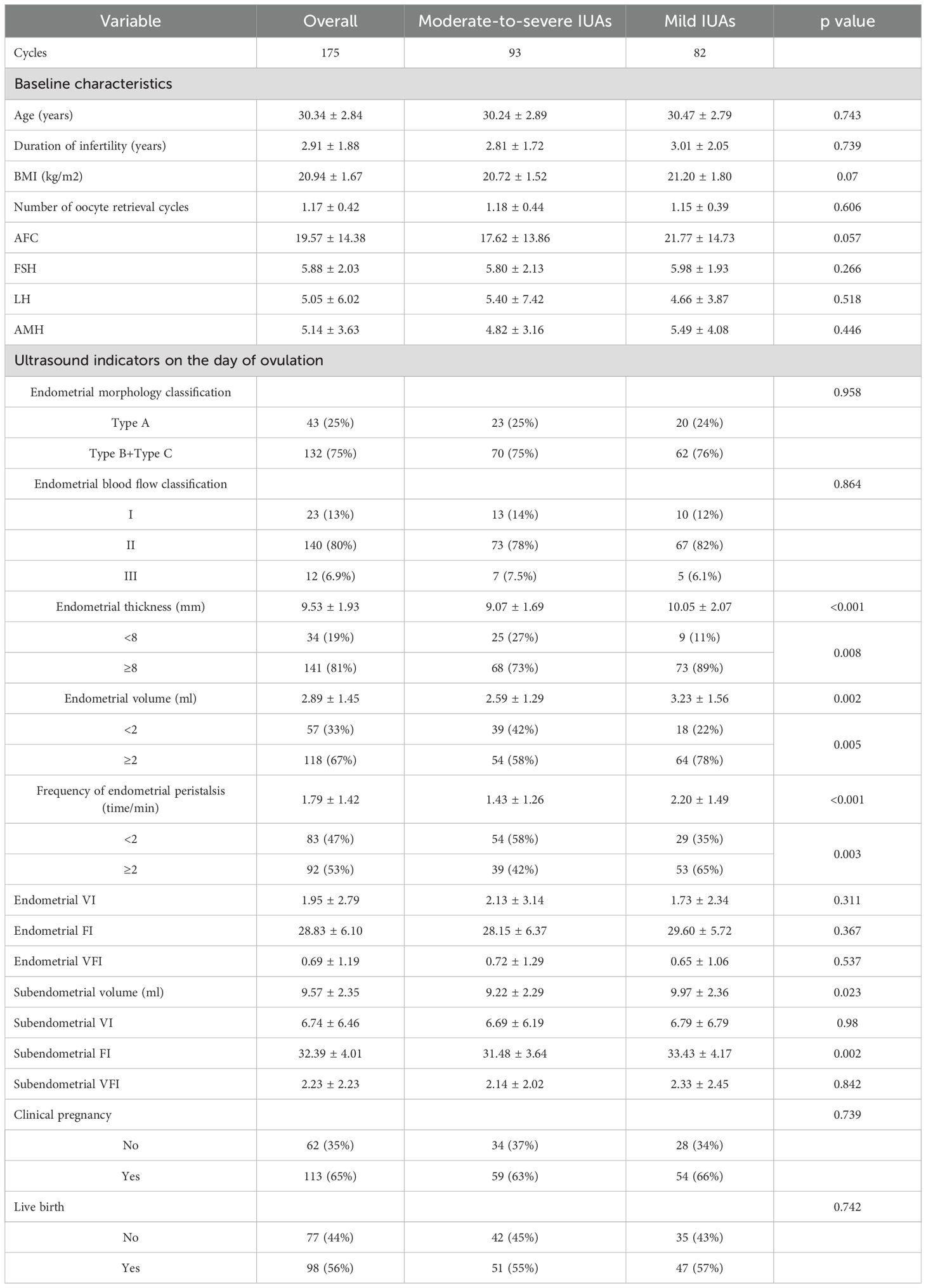
95% of researchers rate our articles as excellent or good
Learn more about the work of our research integrity team to safeguard the quality of each article we publish.
Find out more
CORRECTION article
Front. Endocrinol. , 27 March 2025
Sec. Reproduction
Volume 16 - 2025 | https://doi.org/10.3389/fendo.2025.1585477
This article is a correction to:
The impact of intrauterine adhesions on endometrial receptivity in patients undergoing in vitro fertilization-embryo transfer
A Corrigendum on
The impact of intrauterine adhesions on endometrial receptivity in patients undergoing in vitro fertilization-embryo transfer
by Ouyang Y, Peng Y, Zheng M, Mao Y, Gong F, Li Y, Chen H and Li X (2025)Front. Endocrinol. 15:1489839. doi: 10.3389/fendo.2024.1489839
In the published article, there were errors in Tables 1, 2 as published. The corrected Tables 1, 2 and their captions “Table 1 Comparisons of characteristics and ultrasound parameters on the day of ovulation/Table 2 Comparisons of characteristics and ultrasound parameters on the day of ovulation between the mild- and moderate-severe IUA groups” appear below.

Table 2. Comparisons of characteristics and ultrasound parameters on the day of ovulation between the mild- and moderate-severe IUA groups.
The authors apologize for this error and state that this does not change the scientific conclusions of the article in any way. The original article has been updated.
All claims expressed in this article are solely those of the authors and do not necessarily represent those of their affiliated organizations, or those of the publisher, the editors and the reviewers. Any product that may be evaluated in this article, or claim that may be made by its manufacturer, is not guaranteed or endorsed by the publisher.
Keywords: endometrial receptivity, intrauterine adhesion, frozen-thawed embryo transfer, natural cycle, ovulation day, transvaginal sonography
Citation: Ouyang Y, Peng Y, Zheng M, Mao Y, Gong F, Li Y, Chen H and Li X (2025) Corrigendum: The impact of intrauterine adhesions on endometrial receptivity in patients undergoing in vitro fertilization-embryo transfer. Front. Endocrinol. 16:1585477. doi: 10.3389/fendo.2025.1585477
Received: 28 February 2025; Accepted: 05 March 2025;
Published: 27 March 2025.
Edited and reviewed by:
Richard Ivell, University of Nottingham, United KingdomCopyright © 2025 Ouyang, Peng, Zheng, Mao, Gong, Li, Chen and Li. This is an open-access article distributed under the terms of the Creative Commons Attribution License (CC BY). The use, distribution or reproduction in other forums is permitted, provided the original author(s) and the copyright owner(s) are credited and that the original publication in this journal is cited, in accordance with accepted academic practice. No use, distribution or reproduction is permitted which does not comply with these terms.
*Correspondence: Xihong Li, eGlob25nbGl5eGtAMTYzLmNvbQ==
Disclaimer: All claims expressed in this article are solely those of the authors and do not necessarily represent those of their affiliated organizations, or those of the publisher, the editors and the reviewers. Any product that may be evaluated in this article or claim that may be made by its manufacturer is not guaranteed or endorsed by the publisher.
Research integrity at Frontiers

Learn more about the work of our research integrity team to safeguard the quality of each article we publish.